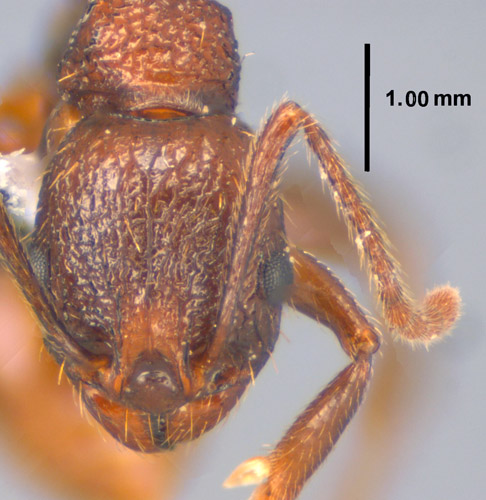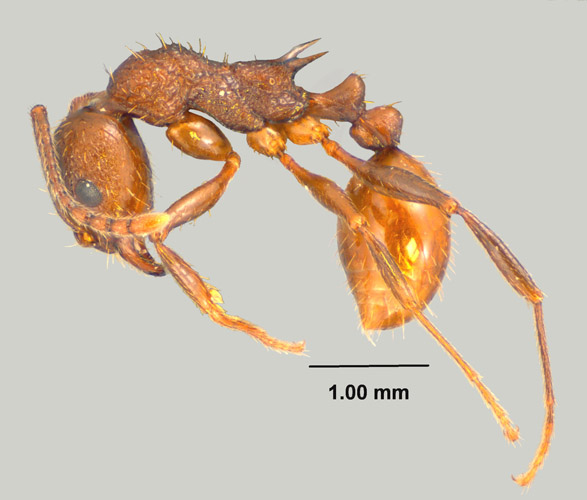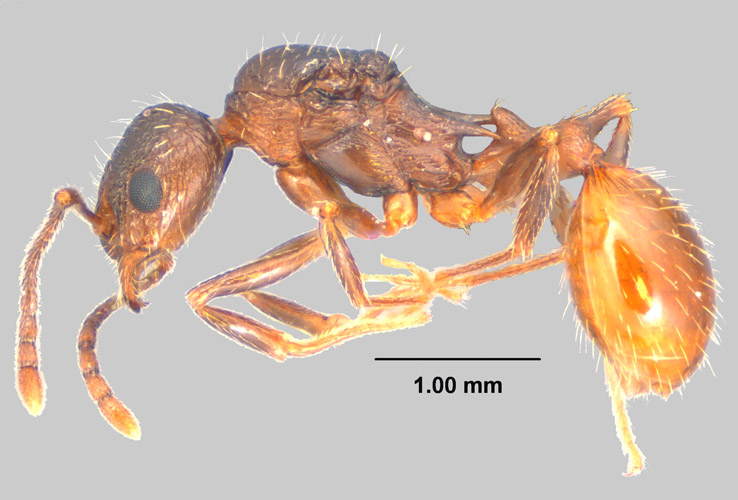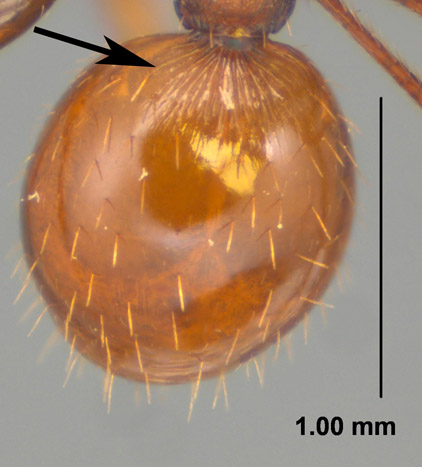Aphaenogaster mariae, full face view of worker
(click image to enlarge). |
Aphaenogaster mariae,profile view of worker
(click image to enlarge). |
Aphaenogaster mariae, profile view of dealate queen (click image to enlarge). |
Aphaenogaster mariae, dorsal view of gaster showing striations that extend outward from the postpetiole in a fan shape (click image to enlarge). |
Introduction
Ants in the genus Aphaenogaster are medium sized to large, slender with long legs and antennae, usually have propodeal spines (a few species lack spines), have 12 segmented antennae with the last 4 segments forming a weak club. The genus is widespread in North America and species nest in rotting wood, under bark, and in soil.
Identification
Aphaenogaster mariae is very distinctive with its strong sculpture, long spines, and fan shaped striations found at the base of the first gaster tergite. Queens are approximately the same size as workers.
Biology and Economic Importance
Aphaenogaster mariae is supposedly somewhat rare throughout its range, although it appears to be a fairly common species in rich hardwood forests in MS, where it can be found on oak trees. An easy way to collect them is smear some peanut butter on the trees about chest high and wait for workers to make their way down from the tree tops where they apparently nest. Dealate queens are occasionally found in the soil, often in A. fulva colonies. It has been suggested that A. mariae is a temporary parasite of A. fulva (Smith, 1979), and that later the queen begins a colony high in trees. I have only found one colony (in MS), and it was in the top of an oak tree that had been felled in a storm. The full extent of the colony was not discovered, because the wood was still sound, instead of rotting.
Distribution
Literature Cited
Links
AntWeb Images
Discover Life Images
|






